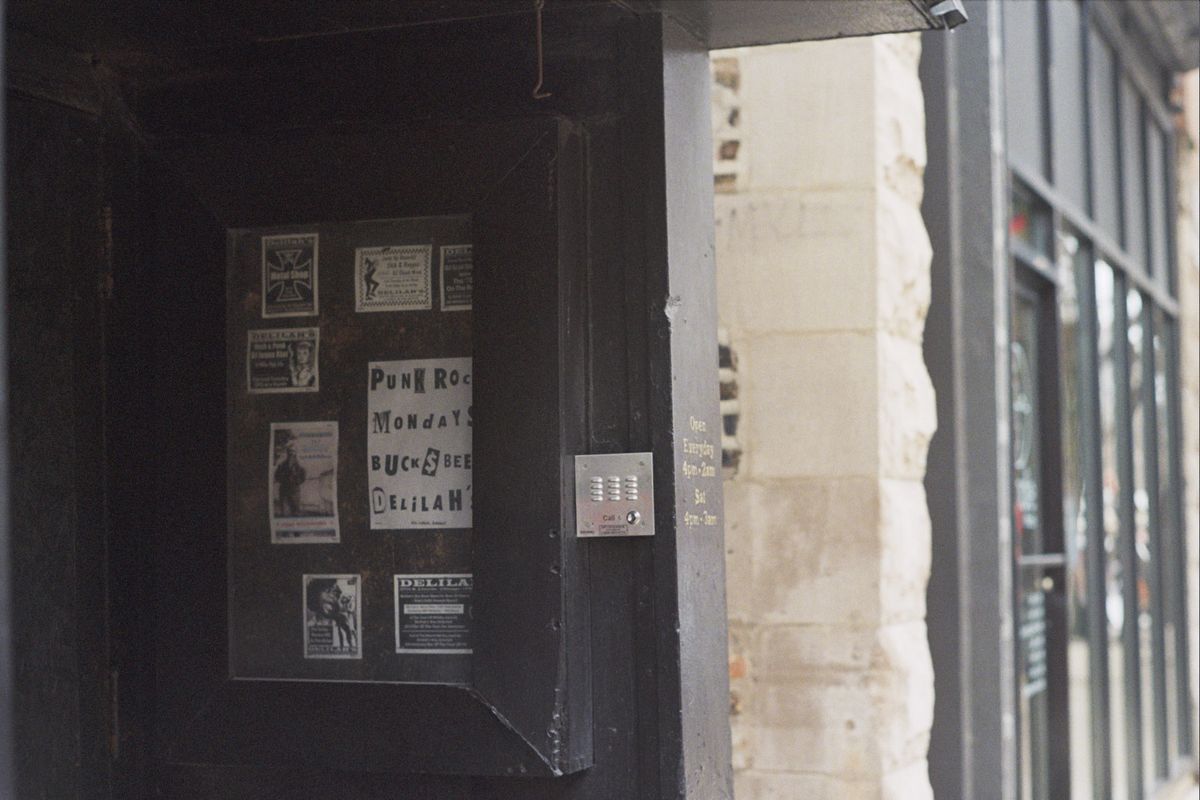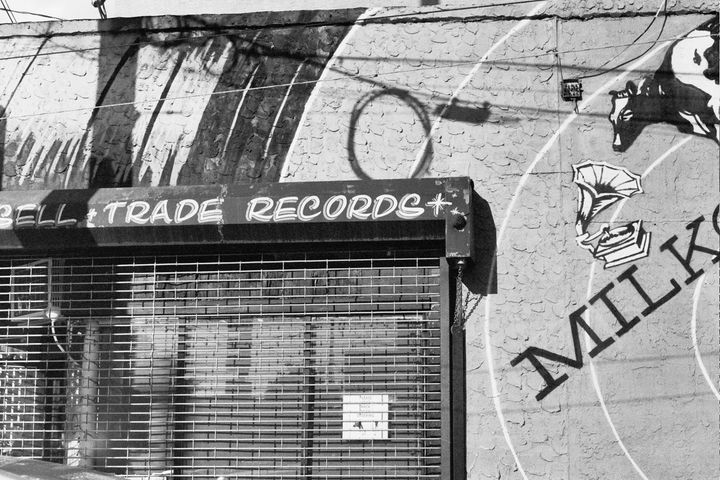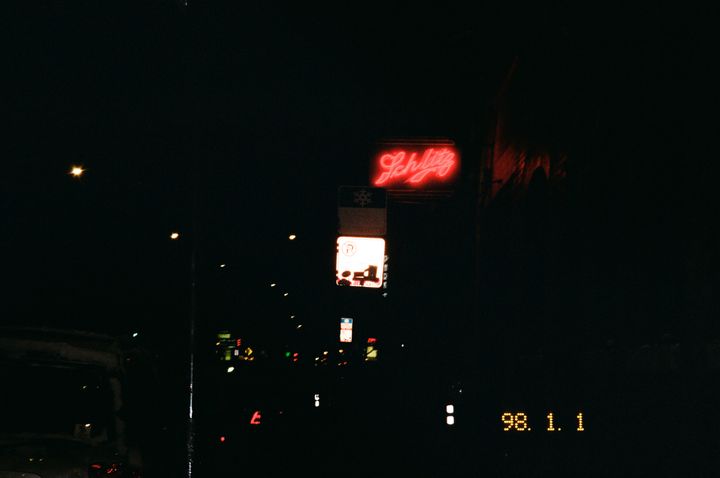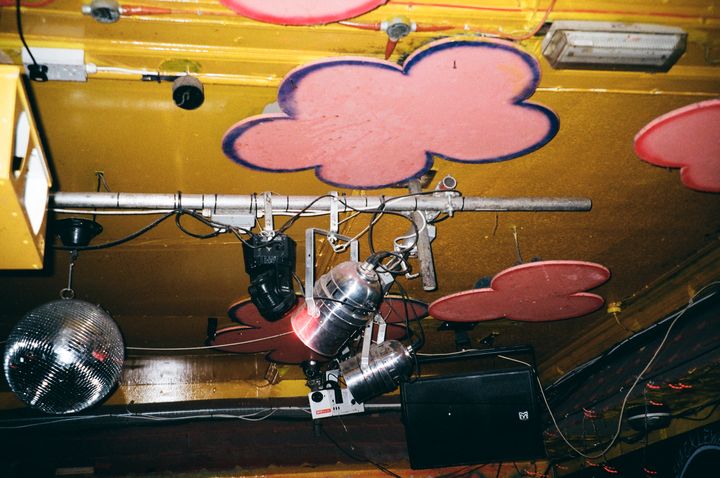on intentional communities + framing of internet content

While I was sitting at my desk this morning for a class with the dullest title you could ever imagine, I got an email notifying me that Trace Mountains uploaded a new work-in-progress song to their (well, just Dave’s, I guess) Patreon. A lot of the music that made me really feel something specific was via the Trace Mountains Patreon. I wrote about Patreon before from more the perspective of artists using it, but I think it’s worth reexamining as we get further from touring without much end in sight.
The appeal of Patreon, even more than wanting to support artists and podcasts I like, lies in that feeling of something special and intimate. I think the music industry loves to think of things as “okay now we have this instead of that” as opposed to treating different outlets as inherently different methods of communicating. It’s no new or interesting take to say the music industry tries like hell to push back innovation at all cost and most everybody just goes with that.
For example, the rhetoric around live streams is so much “this is no replacement” and, while that’s obvious, people learning to film and broadcast music online is cool. The potential for simulcast live shows is cool, especially. Making live music more accessible is always a good idea and one not often centered. Generally, professionally shot live film is an asset to artists from a consumer promotional standpoint but also as proof of live capability especially for artists of color who don’t benefit from the pervasive white rock band culture looking more for a good hang than anything. The more widespread practice of filming at venues and studios not only potentially creates these opportunities for more artists in more places once touring starts again, but lands us in a better place during quarantine.
People aren’t as interested in sitting on Instagram live watching some person play on their couch as they were in April of last year, but that doesn’t mean livestreaming, even more amateur livestreaming, is something to brush off as over. If we’ve learned anything in the last year it’s that the live music industry isn’t guaranteed so bands figuring out what works for them can be crucial. Bandcamp days are cool, but how many t-shirts can you shill? Is there a better (less fee-ridden) way to get people to support you than buying your album digitally? Is there a lane that is both fun and valuable for the people who like your music and gratifying for you?
Often what’s missing from discourse around livestreams and Patreon is that they’re exclusively treated as this lesser substitution for the live touring industry instead of something which could, and should, be viewed as supplementary. I think it’s potentially a mistake for artists, especially bands who engage with music in the really traditional way, to write off alternative methods of community building as some offshoot of the dreaded social media. Of course not everything will be for you, but trying to explore new outlets can potentially be fun alongside making your band a little bit of extra money and opening a more positive community which is near impossible on social media generally.
I love the bands I follow on Patreon, but I know what kind of content I like and am signed up for bands (and podcasts and journalism outlets) which provide that. I know I like work in progress songs. I like recipes. I like special covers. I like podcasts. I like blog type updates and hearing where the things being posted are coming from. One of my favorite things about Dave Benton’s Patreon is that when he posts work in progress songs he explains what the cover photo is of and how the photo came to be. Getting caught up in treating something like Patreon, or doing a livestream series or doing a newsletter or whatever, as this consolation prize to the “regular” industry degrades the value in them.
There is huge value, monetarily but also community wise, in using the internet in a really intentional way catering to a smaller, more niche community of people who want to be there. It’s not new. Bedroom type artists do it all the time. It’s incredibly interesting to look at someone like Mitch Welling (or Flatsound) and how he has navigated his career mostly through cultivating an intentional community through the internet. To reference someone a bit more in the touring game, art collective Making New Enemies putting out a zine, compilation, and limited merch (as they’ve done for many years) isn’t a far cry from what a site like Patreon can facilitate. It’s just a slightly different method, not one better or worse.
In a recent article on Water & Music, there was some discussion of artist to fan methods of generating revenue that mimic more like what internet personalities use. That combination of twitch donation, integrated skins you can buy, chat features on streams, all that jazz which specifically the Chinese industry has embraced. It’s a great article overall but, as someone who exists closer to indie rock and scenes dependent on more DIY live experience, it really felt pertinent to think about music as not more pure than other forms of media or that exploring things outside the norm are concessions as an artist. This idea of fan centric music experience outside of just live while not feeling the American embedded shame of taking charity is more ideal in my opinion. That’s true all the way down to DIY.
Every artist is entitled to run their music career as they see fit. This isn’t really a call to action for more bands to do more things they don’t feel suit them, but I’d rather see the industry and people who talk about it transition away from the either/or dichotomy especially as we move into a year likely free of live music. It’ll be more gratifying and interesting to see what people create if we treat these things like permanent, positive features of music and entertainment instead of temporary placeholders.
I think music journalism would benefit from curating more intentionally specific audiences, too. While newsletters and individualistic writing are, obviously, not the answer to the great problem that is journalism, there’s exciting things that have been going on outside the realm of one writer deciding to write a newsletter every week for the last year. Discussion of creating an audience isn’t just about one person creating income, it can also be about developing a really tuned in reader base that is content and community driven.
I strongly feel that publications like Tone Glow, which is focused singularly on experimental music, have a lot of potential. Broad content isn’t always best content. There is value in knowing where to go for reviews, interviews, and community discussion of certain things. Tone Glow has a wide array of contributors and is helmed by Joshua Minsoo Kim, whose thoughts on journalism I echo often. It works because a specific focus was chosen paired with the vision of a good editor. Tone Glow just started a Patreon, you should check it out.
I mentioned Water and Music earlier which is more about technology and business as it relates to music than music writing generally, but the growth it’s had in the last year is incredible. I don’t see compartmentalizing of content as a bad thing.
But separating by style and types of content isn’t the only way to narrow a publication. I’ve expressed before that local coverage is going to be more important and has huge value when it comes to people engaging not only on a writer-reader level, but gives context to their physical world and the communities that inhabit it. It’s why the loss of alt-weeklies is felt so heavily (please donate to the chicago reader).
In my opinion, creating engaged communities should be a goal of publications. Not the only goal, but purposeful music journalism with a mind toward a community both in readership and writers is a potential method for sustainability. Money is always the problem, but it’s a problem already and we’ve gotta do something.
Also, these are just the things I like.
Miranda Reinert is a zine maker and law student based in Philadelphia. She is hoping you have a good new year’s eve. Follow me on Twitter for more on music and other things like when I get to be on the Endless Scroll Podcast: @mirandareinert. I also just opened up a paid tier of this newsletter which for $5 a month (or $40 a year! what a deal!) you’ll get free zines as I make them and one upon sign up! Wow! But as always, thanks for reading!



Comments ()